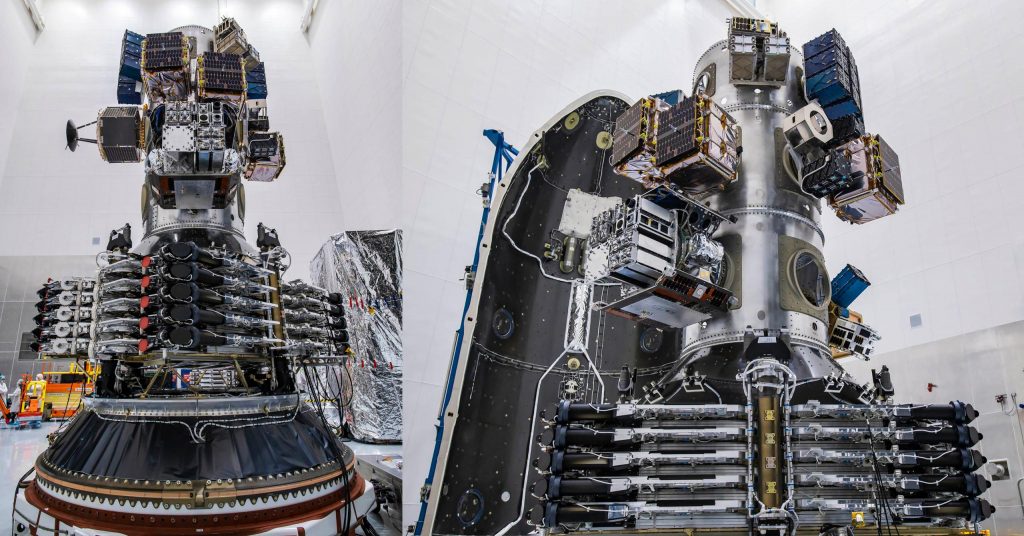One week after SpaceX and the world’s first orbital launch of 2022, the company is a few days out from its second launch of the year – this time carrying dozens of small satellites for a variety of rideshare customers.
Aside from potentially being the world’s second orbital launch of the year, the mission – known as Transporter-3 – will be the third Falcon 9 launch dedicated to SpaceX’s Smallsat Rideshare Program, which offers what is likely the world’s most affordable ticket to orbit.
Prospective customers buying directly through SpaceX can currently pay just $1 million to launch up to 200 kg (440 lb) to sun-synchronous low Earth orbit (LEO). While rideshare payloads lose out on the benefits of hands-on, white-glove customer service and a more direct, tailored orbit insertion offered by a dedicated launch, the small rockets that offer direct launch services for small satellites are extremely expensive. There are currently only two or maybe three small rockets that are currently active, have flown at least a few commercial satellites, and can be expected to launch every few months.
Rocket Lab’s Electron is the most available of the three and is capable of launching 200 kilograms to a 500 kilometer (310 mi) sun-synchronous orbit (SSO) for about $7.5 million – $37,500/kg if fully exploited. While it’s only completed two successful launches, Virgin Orbit’s air-launched LauncherOne rocket is capable of delivering 300 kg (~660 lb) to the same orbit for $12 million ($40,000/kg). Other rockets like Japan’s Epsilon and Arianespace’s Vega often offer rideshare services but both cost just under $40 million apiece and can only deliver 1-2 tons to orbit with the same downsides as a Falcon rideshare.
Put simply, there’s a reason that SpaceX’s Smallsat Rideshare Program has been so successful. In just two Transporter launches, the company has delivered almost 220 small satellites to orbit for dozens of different customers – including startups, universities, space agencies, student groups, science teams, and more. Transporter-3 will be no different and could carry 80-90+ small satellites to orbit, including 44 SuperDove Earth observation spacecraft for Planet. That doesn’t include the possibility that SpaceX – as it has done on both prior Transporter missions – will include several Starlink satellites to take full advantage of Falcon 9’s performance.
Transporter-3 will mark SpaceX’s first ‘land landing’ of a Falcon booster in more than six months and its first truly polar launch of 2022. Falcon 9 is scheduled to lift off no earlier than (NET) 10:25 am EST (15:25 UTC) on Thursday, January 13th. Three more Falcon 9s – including one NET January 24th – are scheduled to launch before the end of the month. Barring schedule delays, Transporter-3 could also be the first of up to four dedicated SpaceX rideshare launches this year.


 to join our ~200 satellite fleet; enhancing our daily scan of
to join our ~200 satellite fleet; enhancing our daily scan of  !
!